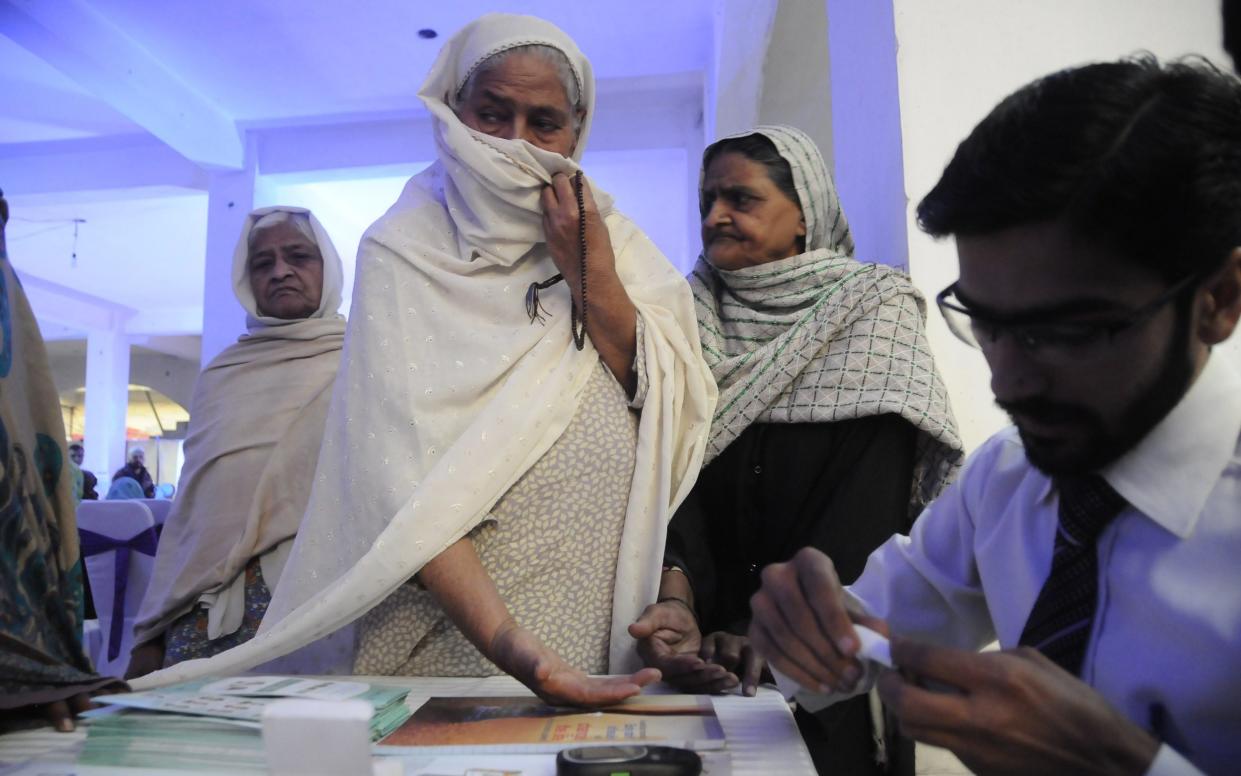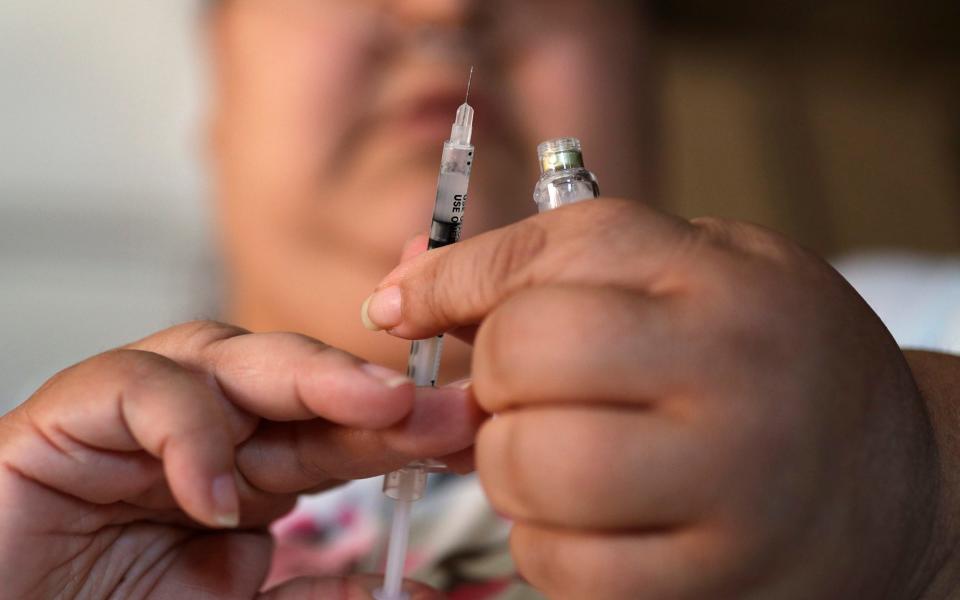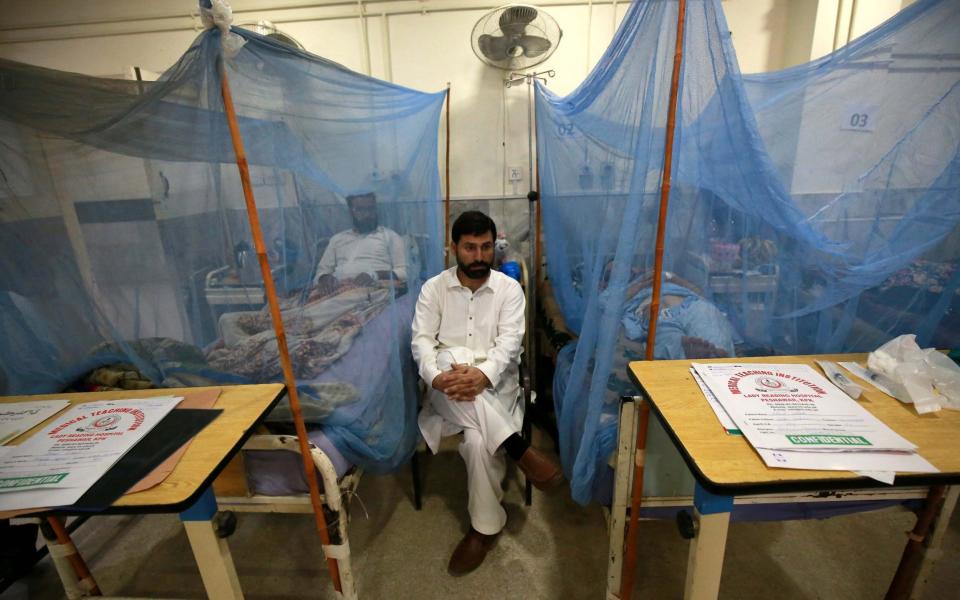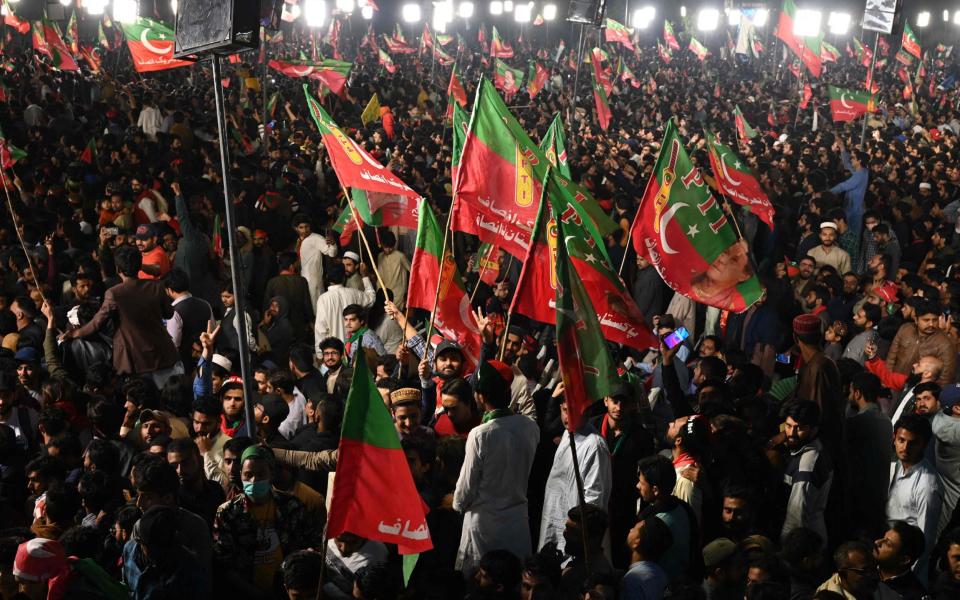Why diabetes is becoming a death sentence in Pakistan

Muhamad Jameel shakes his head in disbelief, recalling the last conversation he had with his ailing father, Muhammad Rasool, before kissing him goodnight.
“We spoke about Imran Khan returning to politics, he was excited about that as he was a big fan of his. And, cricket, of course,” says Mr Jameel.
But the next morning, on January 17, he was awoken by harrowing screams from his mother.
His 56-year-old father had died from diabetic ketoacidosis – a condition where high blood sugar leads to a build-up of ketones, a toxic chemical produced by the liver, due to a lack of medication.
Mr Jameel’s father developed type one diabetes a decade ago. For many years, the Jameel family, from the village of Shabqadar in northwestern Pakistan, had been able to control Muhammad’s condition by injecting him with regular insulin.
But over the past 12 months they could no longer afford to purchase enough medicine.

“Like many Pakistanis, we have a serious problem with money. Even being able to afford to travel to a hospital became a big issue,” said Mr Jameel.
“We continued to try and buy insulin and other drugs to keep my father alive but we were not able to give him the prescribed dosage and that ultimately caused his death.”
Such tragedy is becoming increasingly common across Pakistan, a country with the highest prevalence of diabetics in the world – some 33 million people, or 26 percent of its adult population.
Set against a backdrop of extreme financial turbulence – inflation has soared to its highest rate for over 50 years, with the government on the cusp of a catastrophic default – Pakistanis have increasingly struggled over the past year to access the medication they need to keep themselves alive.
An impending disaster
Earlier this month the Pakistan Medical Association, the country’s leading private healthcare organisation, warned of impending disaster, arguing that unless the government acted soon, many lives would be unnecessarily lost to chronic conditions like diabetes or heart disease.
The organisation called on Islamabad to treat pharmaceutical companies as an essential industry and ringfence some of the country’s limited funds for the purchasing of raw drug materials.
Professor Zia ul Haq, the Vice Chancellor of Khyber Medical University, said there are “multiple” reasons for the high prevalence of diabetes in Pakistan – “from high levels of obesity and tobacco use to a lack of exercise and availability of fatty, fast foods.”
If a diabetic’s blood sugar levels are not controlled then this can lead to long-term chronic conditions, including kidney or nerve damage, as well as acute complications like diabetic ketoacidosis, which can arise suddenly and require immediate treatment.
Medicines like metformin or insulin injections are usually administered to a patient to keep their blood sugar within a safe limit but these drugs are expensive.
Even before the Covid-19 pandemic and war in Ukraine caused disruption to supply chains and skyrocketing commodity costs, one in two diabetics in the developing world could not afford enough insulin, according to a study by the World Health Organisation.
Pakistan usually imports 95 percent of its active pharmaceutical ingredients (APIs) but the country’s currency, the Rupee, hit an all-time record low in its valuation in March, causing a spiralling import bill.
The Pakistan Pharmaceutical Manufacturers Association (PPMA) has noted a 21.5 percent reduction in medicine production in the country since January due to a lack of available raw materials.

Five major multinational pharmaceutical companies have meanwhile left the country, while at least 40 Pakistani companies have said they are suspending operations.
On Monday, the government deferred a decision to raise the prices of at least 100 medicines, arguing that it would price out more Pakistanis from purchasing essential medicines. Pakistan’s Pharma Bureau warned there would be “more shutdowns” as production costs rise further.
The cost of importing ready-to-use drugs is also surging. Thousands of shipping containers containing life-saving drugs remain impounded at Karachi’s port because the authorities simply can’t afford to unload the medicines, according to reports from Pakistani media.
No funding for insulin
Previously, Pakistan’s public healthcare system provided free diabetes drugs to patients but Dr Muhammad Fayyaz, one of the country’s leading diabetes experts, told the Telegraph at least 30 percent of facilities have run out of insulin.
While some private hospitals still stock diabetes drugs, availability is erratic. The cost of insulin has doubled or even tripled since last year – an unaffordable hike for many in Pakistan, where 43 per cent of the population are now living in poverty, UN estimates show.
“The government is no longer able to allocate sufficient money for drugs like insulin or for laboratory testing,” said Dr Fayyaz.
“There are no medicines available at government hospitals and many Pakistanis can’t afford to purchase drugs from private hospitals. Patients are just at home without medicines.”

Public health surveillance is sporadic in Pakistan. The latest available figures, an estimate from the International Diabetes Foundation, suggest 400,000 Pakistanis died from the condition in 2021.
Worryingly, experts have warned that this figure could be surpassed in 2023, reaching a record number of diabetes deaths due to limited medicine access.
“We have seen many more deaths over the last months from diabetes because people simply can’t get treatment. I would estimate that one-third of Pakistanis can no longer get insulin or other diabetes drugs,” said Dr Fayyaz.
“Data is scarce but according to my experience, deaths are increasing, the mortality rate from diabetes has increased many times over.”
Danyal Khan lost his older brother Hussain, 32, in December after he had to get his right leg amputated due to complications caused by diabetes.
“We sold our land and even our shop to pay for his initial treatment but the drugs prescribed to us were expensive and we are very poor,” said Mr Khan, who lives in the city of Mardan in northwest Pakistan.
“I still remember how my late brother passed so many sleepless nights due to this disease because we could not source him insulin.”
Instead of facing the burgeoning healthcare crisis full on, Pakistan’s leaders appear to be paralysed by a political power struggle.
Imran Khan was removed as Prime Minister after dubious political horse trading and a no-confidence vote in April. He remains the country’s most popular politician but is now in opposition.
Shehbaz Sharif, the current Prime Minister, and the country’s all powerful army and police appear to be doing all they can to stop Mr Khan returning to power in the autumn’s planned general election.
Last week, police attempted to storm his Lahore residence, using tear gas and baton charges. They allege Mr Khan’s supporters resisted with force.

Meanwhile, negotiations with the International Monetary Fund (IMF) continue for a proposed $1.1 billion bailout that would ease Pakistan’s economic woes.
Mr Sharif’s government has already implemented a series of hugely unpopular austerity measures to meet the IMF’s terms for relief, including hiking the price of fuel and gas.
However, the incumbent appears reluctant to impose further reforms that are necessary to unlock the funding, for fear of falling further behind Mr Khan at the ballot box.
For Mamoona Imran, 32, relief could not come soon enough. Her eight-year-old son, Saim, was diagnosed with type one diabetes one year ago.
“All the public hospitals outside have stopped providing insulin and so I have to try and buy it from the private market,” explains Mrs Imran, whose husband died in August 2022, while she is unemployed.
“I should give Saim insulin four times a day but now I can only afford to give it to him twice, in the morning and evening.”
Mrs Imran told the Telegraph her son has been hospitalised in each of the last five months after suffering from swollen limbs and extreme weakness but she says the cost of admission means she again can’t afford to buy enough insulin once he is discharged.
“I am in real trouble and really worried about my son. Doctors say he will only survive if he increases his intake of insulin,” says Mrs Imran.
“If my current situation doesn’t change then there is no chance my son will survive. I am literally staring at the death of my son.”
Protect yourself and your family by learning more about Global Health Security

 Yahoo News
Yahoo News 
